Last Updated on March 6, 2021 by George Pavlopoulos
Street photography documents life. But it’s through light and shadow that we document our very existence.
Definitions usually fail to include everything, and they end up in lengthy debates. Subsequently, loads of questions arise: what is street photography? Which is the perfect lens for street photography? Should you ask people before taking their photos? Are candid street photos the only acceptable form of street photography? Should you take pictures up close, or should you respect the privacy of individuals? And how about composition, colors, or combinations of light and shadow?
The list of questions is endless and can go on forever. Asking too many questions can be frustrating sometimes: it can block your creativity and demotivate you. To be honest, I don’t believe in endless theoretical debates when it comes to artistic expression. I believe more in trial and error, and I definitely prefer to explore all these questions as time goes by. The same approach I have with writing: think, observe, write, edit, deal with the questions -and write again. If I had to reply to all these questions beforehand, I would have never written a book.
If you’ve already read my Instagram ebook, you might already have an idea of the kind of photos I love. In this article, I won’t try to give any solid replies to the abovementioned questions. I don’t want to start a new debate, nor I want to extend the previous ones. All I’m going to do here is present some of my photos and explain how I got attracted by light and shadow.
Why I chose light and shadow for my street photography

Some people claim that writers are always writing the same book. It means that they follow the same patterns, deal with the same subjects, their characters look very much alike, and express themselves using the same aesthetic means. One could also say the same about photographers: they shoot the same photo for their whole life. The faces and places might change, but every new photo has the same style as the previous ones at the end of the day.
The validity of such statements doesn’t really matter to me. Despite being an avid reader, I don’t define myself as an academic or a purist. That said, I also don’t believe that form should be a prison, in which an artist either follows all its rules or otherwise he/she is rejected. Of course, this doesn’t mean that you can do totally random things and call them art. No, not at all. But when people create a body of work, and they decide to show it in public, they are responsible for the ideas, approaches, and aesthetics they present. Then, the audience has to decide.
I tried to take various kinds of photos throughout the years, but there was constantly a pattern that attracted me: light and shadow. Although one might say -probably correctly- that this seems to be an ideal subject for black and white photography, the truth is that I always explored it in color. All that negative black space around a person mesmerized me. Sometimes I took these photos up close, other times from quite some distance. Sometimes I couldn’t tell if this was street photography or not. But what I could say for sure is that it was appealing to my eyes.
After taking lots of photos, I started asking myself why. Why did I like so much the dark aesthetics of people popping up somewhere in a shaded area? What did this mean? What was I really exploring? I kept shooting candid street photos, and I kept wondering. It was not because of the biblical (or even archaic) battle between good and evil: I’m not religious at all. What I learned to recognize, though, is that whenever a sudden light was illuminating a person’s face, I had the urge to take a photo. If I had enough time to move closer to that face, even better.
Approaching the subject was never a major problem for me. I never ask for permission, and sometimes I’d shoot at arm’s length. Other times though, as if I couldn’t have enough of the darkness, I’d take steps back. Soon, I realized that a pattern within a pattern started to appear: I would move towards the person if I could read agony in the face, I would take steps back if I could observe loneliness.
Agony and loneliness always appear in my writings. I often share my agonies about places or people I love, and since I’m traveling alone 95% of the time, I always try to learn something about myself. By using street photography as a medium for exploring these two aspects, I also learned to study others’ agonies and loneliness. That’s why I probably needed the dark (sometimes pitch black) backgrounds: it was as if people in the shadows had to be highlighted only for a second.
Searching for light and shadow
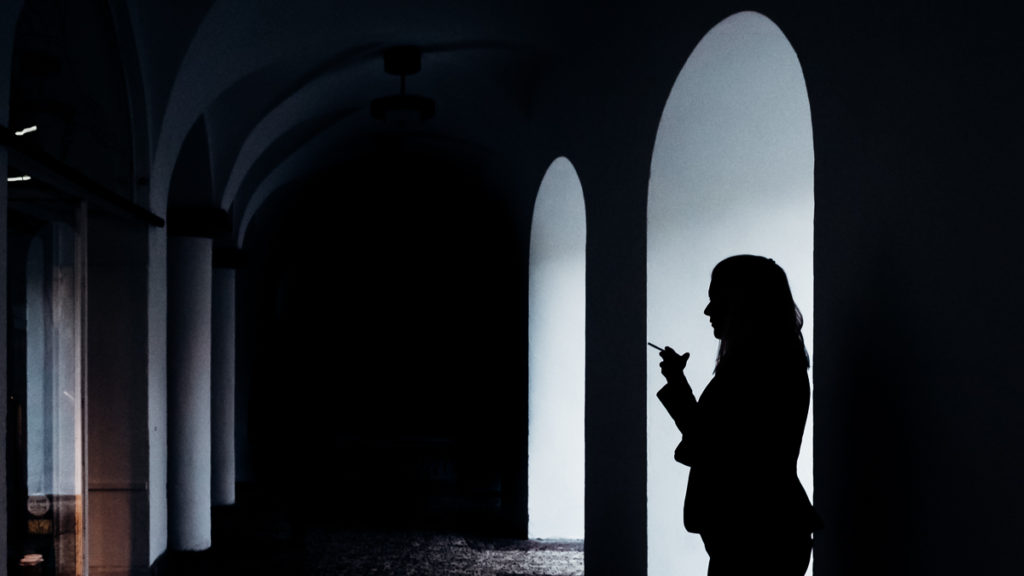
If you search for the perfect light in landscape photography, you probably have some minutes to take the photo. You have time to expose and to get several images. But in street photography, the time is compressed. You might not even have a second; you probably have an instant. Everything happens in the blink of an eye: you have to set the camera, compose, and to take the photo in an instant.
I never take photos in continuous mode. I feel that the rattle of the consecutive clicks sounds like a gun: it feels that I shoot people. Instead, I prefer to use zone focus and to change angles if possible. But I usually don’t even do that: my goal is to capture the exact impression that triggered me and made me want to take the picture. If I fail, it’s okay. Usually, 70% of the photos do not correspond to what I saw. And from that remaining 30%, sometimes there is just one photo to really keep and develop. Sometimes, there’s none.
It took me a while to learn how to search for light and shadow motifs in street photography. The surrounding area always matters a lot, as well as the time of the day. Arches, metro station interiors, bridges, golden hour, all these were things to keep in mind when doing street photography. Whenever I travel, I have a pen and a paper with me: wherever there is good light, I write down the time and the place. And then, I save the last day to re-visit in the given time all these places and try to take some photos.
For example, the photo above is from Prague. On my first night in Prague, I couldn’t sleep, and at 5:30 a.m. I decided to take a walk. It was a tough decision: that’s usually the time I go to bed, not the time I wake up. The city was sleeping, and I walked towards the Old Town Square where the Astronomical Clock is. A few shop owners were unlocking their stores on a side street. I saw a woman opening her store and then lighting a cigarette. She smoked close to the door, and the light was not enough to take a photo. I wrote down the place and time, and I returned to the hotel to get some sleep.
On my last day in Prague, I woke up at 5:30 am, and I went down to the Square again. I dreamt of this photo for a couple of days, and now I had to take it. The same woman opened her shop and then took a step back to smoke her cigarette. Her silhouette fitted perfectly under the arch, and I had the photo I wanted.
Developing in street photography
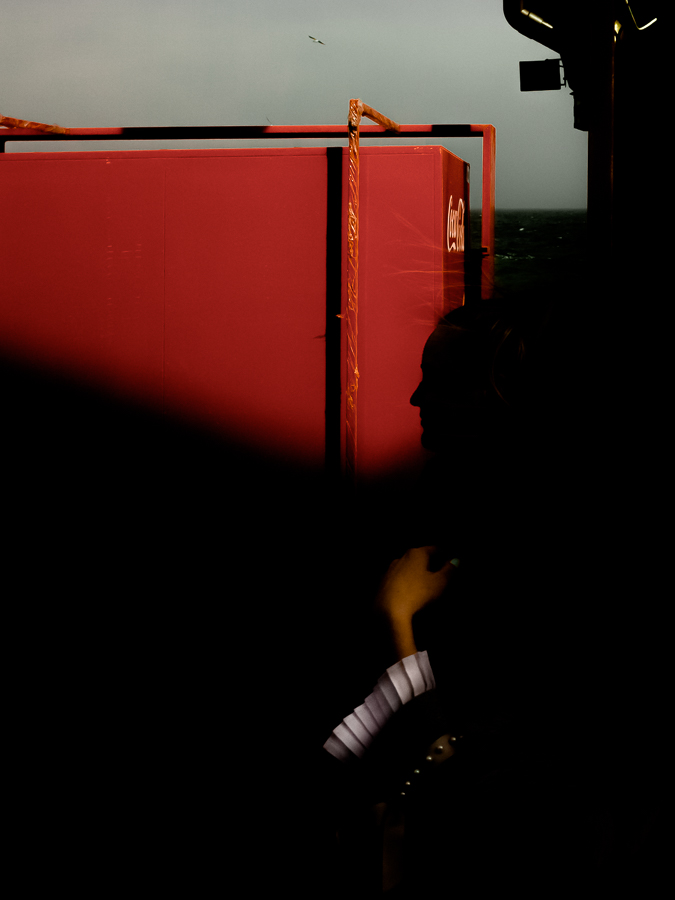
I would have never improved as a writer without reading books. There was a time when I would read 300 books per year, but nowadays, I read unfortunately less. Photobooks played an equally important role in my development in photography. On top of that, I always renew my yearly pass for the C/O Berlin, one of the finest museums for photography. Located close to my flat in Berlin, the C/O Berlin is probably the best photography school.
Visiting exhibitions and reading books helped me to come across old and new masters of photography. Seeing printed photos of Garry Winogrand, Joel Meyerowitz, Bruce Gilden, Gordon Parks, or Vivian Maier, helped me educate my eye and get inspiration and ideas. Then, I came across Saul Leiter and Ernst Haas, and nothing was the same anymore.
Leiter and Haas introduced me to a different kind of photography. In their photos, I saw their use of light and shadow under a totally different prism. While agony and loneliness are still present in the images, these two photographers helped me implement a more dreamy aspect.
The photos of Saul Leiter had this fleeting sense that I so much appreciate. One could even call it visual poetry. The last years were tough for me, and I thought I was turning into a realist, both in literature and photography. Through Saul Leiter, I discovered that photography could be a highly poetic medium. By studying his photobooks, I came across aesthetics that I have only seen in paintings. Not a big surprise, of course: Saul Leiter started as a painter.
On the other hand, the photos of Ernst Haas mesmerized me with their motifs. These were photos of excellent composition accompanied by lots of sentiment. Sometimes blurry, Haas’ photos reminded me of the stream of consciousness in literature. His pictures were love at first sight.
But taking a street scene and creating a dreamy situation is not an easy task. One day in Odessa, while walking at Lanzheron Beach, I found a spot that could be the setting of a nice photo. People were well-dressed that afternoon in Odessa, and I thought I might have a chance to capture the essence of the place. I spent half an hour in the very same spot, taking photos with my Ricoh GR ii. The moment I’ve been waiting for appeared: a well-dressed couple, walking towards the light and shadow. A seagull flying behind, the Black Sea setting, a warm red color, all these elements created an atmosphere as well.
I decided not to remove that Coca-Cola sign. I didn’t like it that much, but I thought that the title “Not a Coca-Cola ad” was adequate. Plus, I never Photoshop my photos, and I just post-process them in Lightroom.
Why I still search for light and shadow in Street Photography
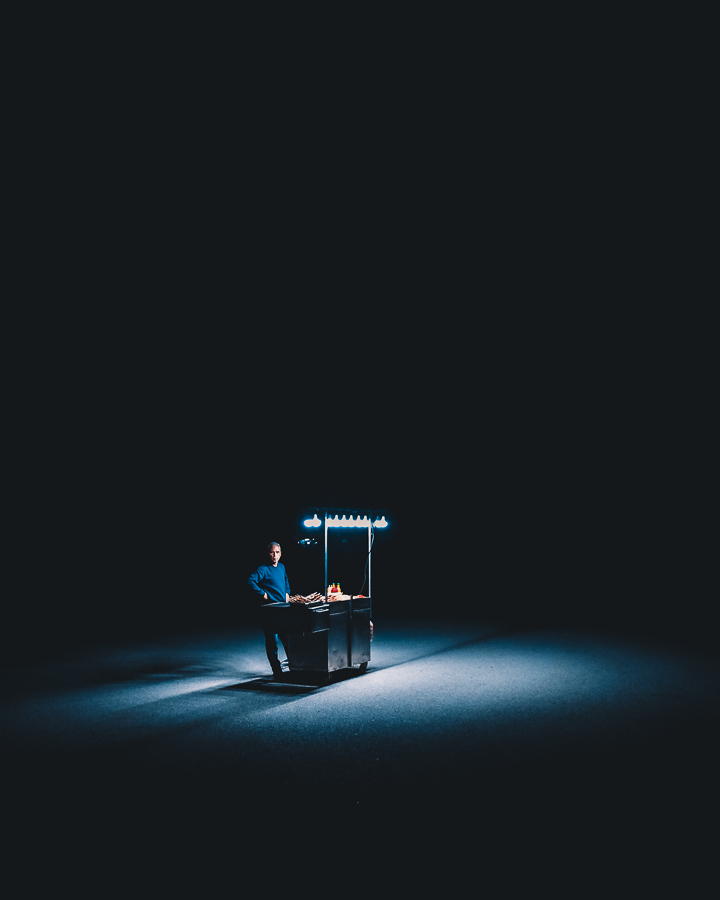
After starting this travel blog in August 2018, I realized that I wouldn’t have so much time for street photography anymore. You see, I had to take more photos of landscapes, more city photos. The readers have the right to see how a place looks like. I always include some street photography in my blog posts, but the truth is that I shoot fewer street photos nowadays. I usually save some candid street photos for my monthly recaps. But even there, I try to present people and places equally. That said, it’s not all about light and shadow in the blog.
Nonetheless, in every journey, I save 6-8 hours for shooting street photography. I usually do this on the very last day of each trip. This is because I’m usually done with writing by then, I have enough photos for the blog, and I also have a good overview of where I could shoot street photography. I never thought that I would take photos of light and shadow for so long, but the truth is that I still find it interesting. And there’s a reason for that.
As I grow older, I find myself returning to my early childhood. I don’t know if light and shadow affect my memories, but whenever I think of those early years, I try to isolate the faces of past times. I see them covered in darkness, like long lost figures. Most of them are still alive, but I might not have seen them in ages. Moreover, these faces are softer in my memory, like when we use slow shutter speed. A few years ago, I wrote an article about these old days. The following excerpt was part of it:
“The white paper and the black film are always an interpretation of a narrative that fails to be resonated: words that fail to be written always deliver a white paper, while photos that fail to be taken always deliver a black image. The eternal battle of the two irreconcilable colors is not only a clash between light and darkness but also the inability of self-expression on a given day. If the creative adult is indeed a child who survived, one can only imagine how painful a white paper or a black film really feels.”
All that being said, taking photos that contain patterns of light and shadow is my way to remember. Moreover, it’s also a way to see these old faces again. The images in dark backgrounds resemble always forgotten memories. I can see the faces again, and I can see again lost loves and people. After a while, the landscape becomes unimportant to me; all that matters are the people. Childhood is a distant dream now. But still, I don’t want to forget anything.
The future of that obsession
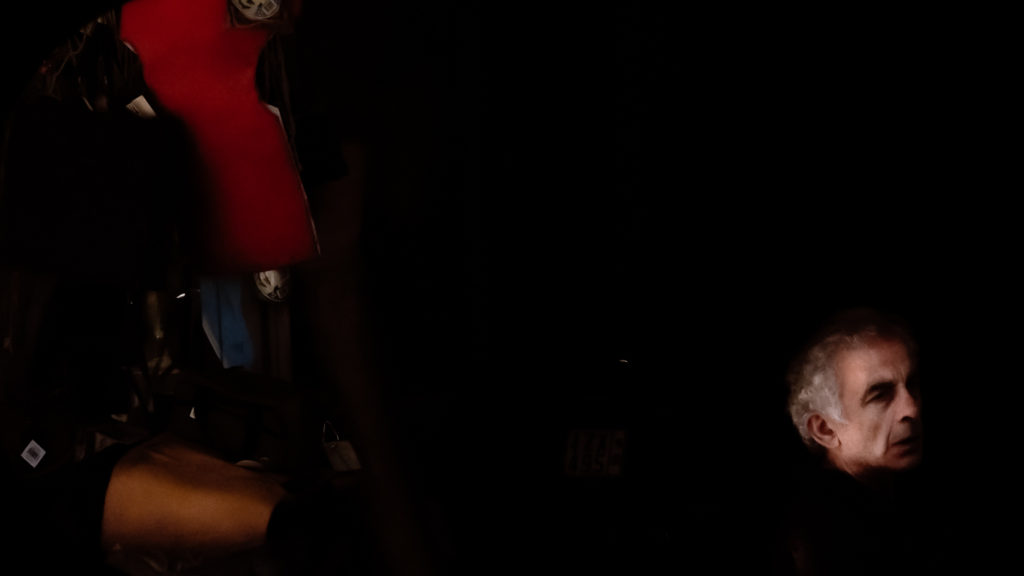
As for the future, well, a new way to interpret this light and shadow obsession appeared recently. How about taking candid street photos in dark backgrounds, but only if I think that these people might be future or past versions of myself? I guess it’s too ambitious, but I’m lately working on it.
Apart from that, I’m planning to present some of the photos either in high-quality prints or in a small exhibition. Or both. I didn’t work on this plan at all, but it’s always in my mind. As I wrote earlier, presenting a body of work in public is about making widely available an approach or an idea. I’m not the first to do it, I’m also not the best one, and I’m definitely not an academic. I just like taking pictures and exploring the abyss that lies behind -or within us.
More street photography: 10+1 tips for better night street shots
*Get my FREE Travel Writing Course*
My Ricoh GR ii Lightroom Presets
Pin it for later
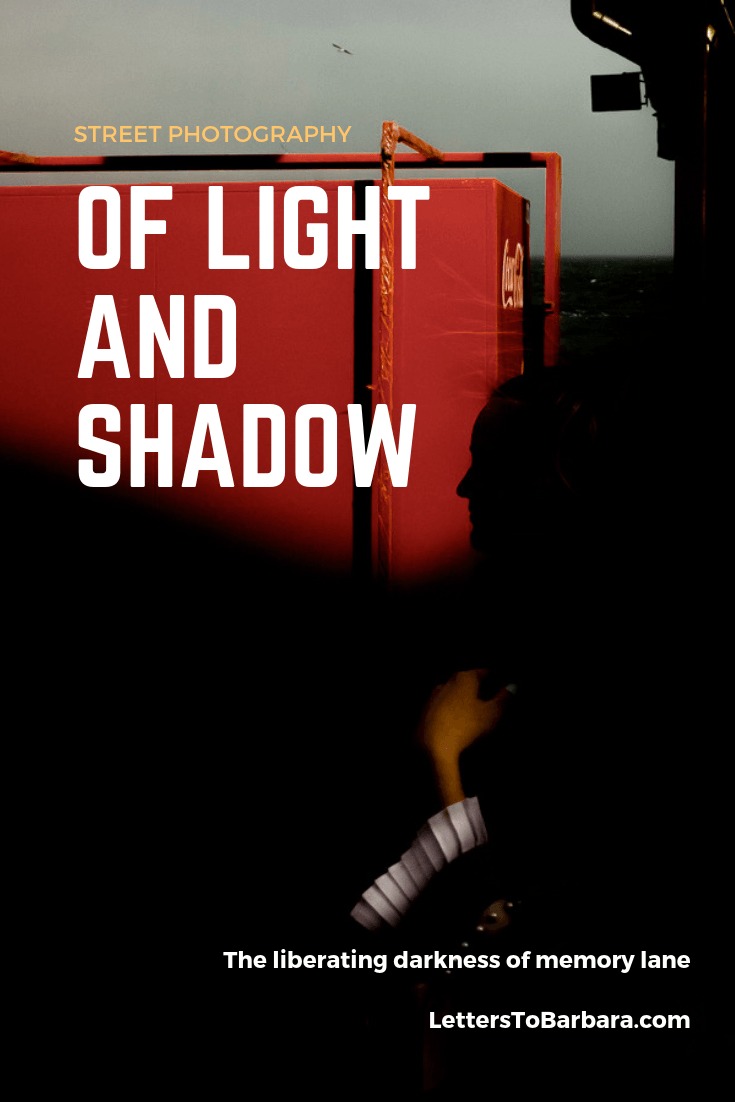
Please share, tweet, and pin if you enjoyed reading Street photography: of light and shadow. Your support keeps this website running and all the info up-to-date. 🙂

